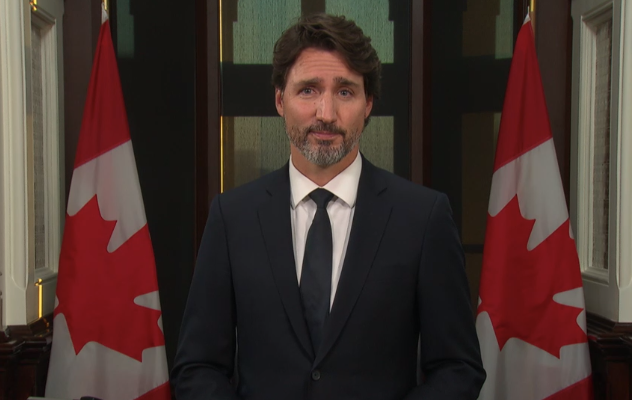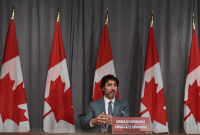Support strong Canadian climate journalism for 2025
The COVID-19 pandemic has battered the Canadian economy. As people across the country experience hard times, the discussion amongst governments decision-makers has turned to a more hopeful future. One where we can build back better by advancing an economic recovery that is both green and inclusive.
These green and inclusive recovery plans make for smart economics, and will lay the groundwork for future prosperity. But a full recovery can't start while this pandemic continues. As well, getting this recovery right will require preparing a stronger foundation on which to build a better country.
Governments will need to wait before beginning to spend on a recovery. Waiting is needed because the economy is now in an extended period of ups and downs. We call this phase “the climb,” and the economy’s up-and-down trajectory in the coming months will likely resemble a mountain range of peaks and valleys. For as long as the climb continues, which will be until a vaccine is found, a full economic recovery cannot begin. The risks of infection from bringing people together, potentially leading to future lockdowns, are too great.
Governments are aware of this. The prime minister opened last week’s cabinet retreat by saying, “We need to get through this (pandemic) in order to be able to talk about next steps.” The immediate challenge of handling a potential second wave, a characteristic of the climb, will take precedence in the minds of Canadians, and time to manage.
Rebuilding the economy once this pandemic has ended will also be challenging. Addressing the unequal impacts of the pandemic on vulnerable communities and mitigating the drivers and impacts of the changing climate that are currently clouding Canada’s skies will both be critical in a spending package that advances national resilience. It is entirely possible, but will require careful planning to get right.
Managing complex problems in parallel offers a chance for governments to use the time spent combatting the pandemic strategically. In this climb spent managing the epidemic, governments can begin to plan for the eventual recovery spending that will support a more impactful set of investments.
A recovery that aims to support sustainability will first need to understand where the potential for job creation and future prosperity in the clean economy is highest. Similarly, an inclusive recovery will need to identify where the impacts of the COVID-19 recession are most highly felt before deciding where stimulus spending would offer the greatest benefits. In both areas, governments can build on existing research by leading organizations around both a green and inclusive recovery.
Putting principles into practice requires a multi-step approach. Governments first need to identify what goals they are aiming to achieve to support sustainability and inclusivity, then collect data to understand where these goals are not being met across the country.
Governments then need to ensure they are accounting for the benefits to human health, well-being, and accessibility that investments in green and social infrastructure offer. Finally, they need to target the major barriers to labour force participation in vulnerable communities to ensure all Canadians are able to participate, and benefit, in an economic recovery.
Recent work from Smart Prosperity outlines what governments should be doing during the climb to ensure a green and inclusive recovery fulfills its potential. The key takeaway from this work is that it is possible to have a recovery that is both green and inclusive — but it will take careful consideration and planning before a recovery is underway, and creative thinking about management of the economy.
Addressing and implementing each step will take time, and planning will need to begin today. If they do not, a number of groups, including women, youth, small businesses, Indigenous peoples and the disabled, may be left behind in a recovery.
The pandemic will continue to hold back a full recovery until it is defeated. During the climb, governments should begin to plan to ensure a recovery drives sustainability, inclusivity and prosperity in Canada.







Comments
Quite frankly, it's 5 years in, and virtually nothing's been done.
It doesn't take full shooting power to ping off a few easy targets.
Not having a plan is just kicking the can down the road ... just what Big Oil ordered.
Of course "full recovery" and "total green" will take time. And the longer it takes to start, the more damage in the meantime, and the longer it'll take: pushing endpoing waaayy down the road.
And it's too late already to wait.
This doesn't seem very useful. Wouldn't it be more worthwhile to consider what we CAN do during the pandemic, and make SOME green things and put SOME people back to work, than to decide we can't do anything for anyone lest someone be left behind? So maybe if we're retrofitting roofs and/or putting in solar panels, we'll need to have two people each on five roofs instead of ten people on one roof; does that make it impossible?
Certainly, cancelling the environmentally and economically insane TMX Pipeline, the Site C Dam, stopping all subsidies to new fossil fuel infrastructure like Coastal GasLink and the associated LNG terminal, and putting a moratorium on old growth and other unsustainable logging could be done immediately!
The authors do not question the dominant economic paradigm (neo-liberal economics) but that paradigm is a major cause of climate change (due to its requirement of perpetual growth on a finite planet, among other reasons). Sustainability is diametrically opposed to neo-liberal economics which requires us to constantly (and exponentially) increase consumption for eternity. Consequently any plan to address climate change that appears economically justified will necessarily inadequately address climate change. The authors (and politicians) need to get thinking outside of the neo-liberal economics box; all their climate change plans until then are doomed to fail.
The authors write: "The key takeaway from this work is that it is possible to have a recovery that is both green and inclusive — but it will take careful consideration and planning before a recovery is underway, and creative thinking about management of the economy."
In a recent analysis, Richard Heinberg of the Post Carbon Institute offers a very different way out of our climate-driven pathway to collapse, cautioning readers to be wary of delusional promises of the "green profit narrative" that we won't need to change the way we live now. Proposed win-win solutions have failed to deliver. For example, starting in 1980s big environmental organizations partnered with corporations pinning their hopes on high tech solutions — so-called “clean energy” promised planet-saving economic growth without resource extraction and waste; Synfuels seemed to be a no-brainer; population growth was forecast to become a non-issue as economic growth enriched poorer people who would have fewer kids. Environmentalists have also lobbied for other initiatives — make way for visions of green profits and jobs galore!.
But over the last few decades our environmental problems are much worse. What went wrong? If green alternatives are really so profitable, why the reluctance to wholeheartedly support them? Turns out there are even more difficulties ahead in attempting to maintain a growing economy and an expanding population while dramatically reducing environmental harms. Estimates of the future costs of climate change are staggering, and unbearable costs are fast becoming society’s burden. Resource extraction yields profits for land owners, while resource depletion yields problems for future generations.
Heinberg’s three proposed solutions: 1) Abolish externalities – Make industrials pay all real costs of their activities from mine to landfill; 2) Change land ownership laws to make land the common property of all people, and make workers the owners of their labor; and 3) Reduce global rate of population growth to a sustainable level, which would reduce levels of wealth inequality.
Source: "Richard Heinberg proposes a way out of out climate-driven pathway to collapse" at Citizen Action Monitor.